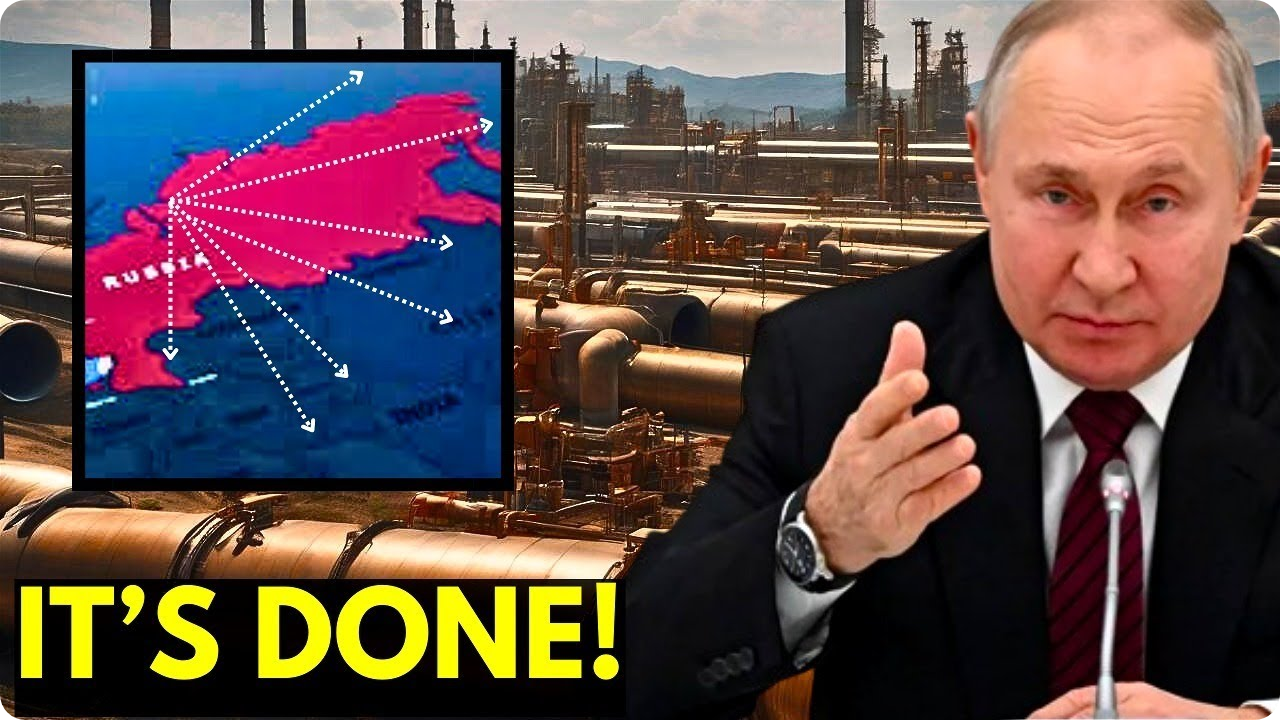
Russia Reveals New Secret Gas Routes And Cuts Supply To Europe
Keep up to Date & Bypass the Big Tech Censorship
Get uncensored news and updates, subscribe to our daily FREE newsletter!
As of now, Russia relies on a pre-existing agreement with Ukraine to facilitate the transportation of natural gas to its European clients. However, this arrangement is slated to conclude in 2024, adding an element of uncertainty to the prospect of its renewal. The relationship between Russia and Ukraine has been strained due to ongoing conflicts, further complicating the extension of the current gas transit deal.
In response to this potential challenge, Dmitry Peskov, the spokesman for the Kremlin, has hinted at Russia’s preparedness for a non-renewal scenario. According to Peskov, alternative routes are already being considered to ensure the uninterrupted flow of Russian gas to existing clients in Europe. This sentiment has been echoed by Deputy Prime Minister Alexander Novak, who reassures that Russia has contingency plans in place to maintain gas supplies to Europe beyond the expiration of the current transit deal with Ukraine in 2024.
The importance of these revelations lies in the broader context of the energy landscape. Peskov has suggested that if the existing deal with Ukraine falls through, adjustments will be made to the logistics of Russian gas exports to Europe. This implies a potential restructuring of how gas is transported from Russia to European destinations.
| Recommended Books [ see all ] | ||||
|---|---|---|---|---|
 |  |  |  |
 |
To comprehend the implications fully, it’s essential to consider the historical background. Ukraine has historically served as the primary route for Russia’s gas exports to Europe. However, geopolitical shifts, including the construction of the Nord Stream pipeline to Germany and the TurkStream link to Turkey, have altered the traditional flow of Russian gas. The current gas transit deal, initiated in December 2019 between Gazprom and Naftogaz, allows for an extension, contingent on annual gas pumping and a “take or pay” mechanism, ensuring payment based on booked capacity.
Recent statements from Alexey Chernyshov, Chairman of Ukrainian Naftogaz, indicate that Ukraine may opt not to renew the agreement for Russian gas transportation to Europe after its expiration in 2024. This decision could have consequences for countries at the end of the pipeline, such as Austria and Hungary, potentially leading to challenges and additional costs in securing alternative gas sources.
Peskov’s mention of alternative routes, including liquefied natural gas (LNG) supplied through Turkey, adds another layer to the evolving scenario. The potential discontinuation of the gas deal between Ukraine and Russia could reverberate across Europe, impacting countries attempting to reduce reliance on Russian gas, as advocated by the European Union.
Looking ahead, Russia’s strategic initiatives come into play. The development of the Power of Siberia 2 gas pipeline, intended to deliver natural gas to China, is a noteworthy undertaking. Ongoing talks between Moscow and Beijing will determine the timing and cost of constructing this mega pipeline. Once operational, Power of Siberia 2 is expected to carry a substantial volume of gas annually from the Yamal Region in northern Russia to China via Mongolia, contributing to Russia’s efforts to diversify its gas exports.
In 2023, Gazprom reported significant growth in gas exports to China through the existing Power of Siberia pipeline. The company anticipates further expansion, projecting gas deliveries to China to reach 38 billion cubic meters in 2025. This strategic shift towards Asia is a response to Russia’s need to adapt to changing circumstances, including the conflict in Ukraine and Western sanctions, prompting a reassessment of energy export strategies and the pursuit of new partnerships.
In summary, the multifaceted developments in Russian gas transit to Europe, potential alterations in routes, and the strategic redirection towards Asia highlight the complex interplay of geopolitical factors influencing the broader energy landscape.


